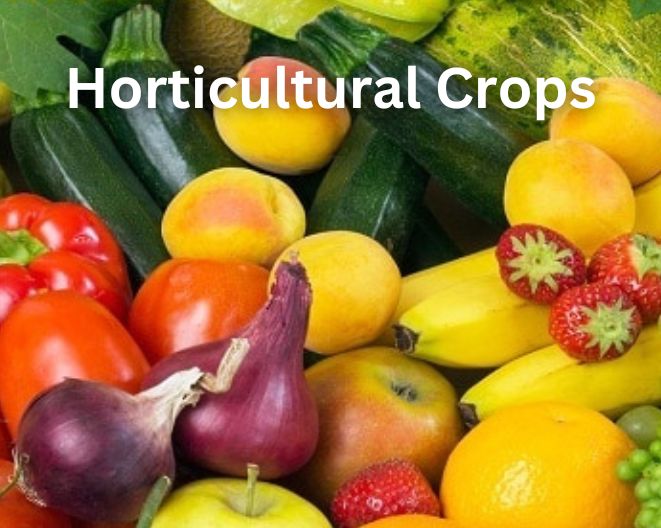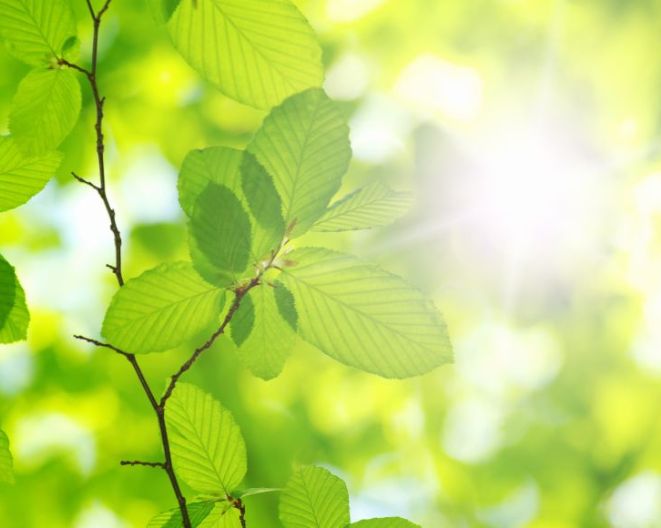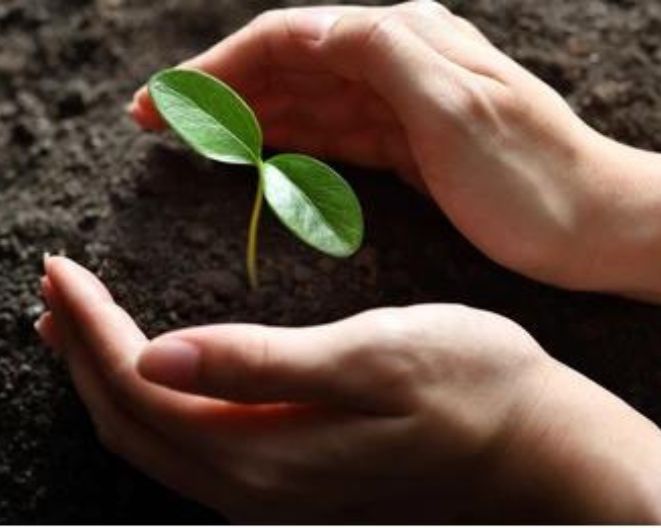Horticultural plants are classified in various ways on the basis of:
- Growth habit
- Life span
- Temperature relations
- Uses
- Morphology
- Landscaping and Cultural requirements
1. GROWTH HABIT:
Plant have different growth and development habit and their classification is based on:
- Body structures
- Cell division
- Size of parts
- Vegetative & Reproductive growth
Succulents:
Plants having some parts that are more than normally thickened and fleshy, usually to retain water in arid climates or soil conditions. These plants may store water in various structures, such as leaves and stems. Examples are cacti and Crassulaceae (a stem or leaf succulent)
Herbaceous plants:
A plant that has leaves and stems that die down at the end of the growing season to the soil level. They have self-supporting or drooping non-woody plants with tender stems. Most of the vegetables and ornamental plants are herbaceous in nature.
Aquatic plants:
Plants that have adapted to live in aquatic environments (saltwater or freshwater) e.g. Lillie etc. They include: Hydrophytes and Macrophytes
Evergreen
Plants having foliage that persists and remains green throughout the year. e.g., pine, cedar
Deciduous
Those plants shed their leaves after one season. e.g. Many shrubs and trees are deciduous
Climbers
LIANA: woody climbers and self-supporting.
VINE: non-woody climbers. depend on neighboring plants.
2. LIFE SPAN:
Annuals
Those plants that complete life cycle within one year.
SUMMER ANNUALS (warm-season annuals): Germinate from seed in the spring and complete flowering and seed production by fall, followed by plant death. Their growing season is from spring to fall e.g., including marigolds, squash, and crabgrass.
WINTER ANNUALS (cool-season annuals.): Germinate from seed in the fall, with flowering and seed development the following spring, followed by plant death. Their growing season is from fall to summer e.g., include winter wheat and annual bluegrass.
Biennials
Complete their life cycle within two growing seasons. We grow many biennials as annuals Examples: Carrots, onions, and beets.
Perennials
Plants live through several growing seasons. They can survive a period of dormancy between growing seasons. These plants regenerate from root or protected buds, in addition to seeds. These Includes Daffodils etc. There are three types of perennials:
Herbaceous perennials:
Develop over-wintering woody tissue only at the base of shoots or have underground storage structures from which new stems are produced. Examples: hosta.
Woody perennials:
Develop over-wintering tissue along woody stems and in buds. Examples: most trees and shrubs are grown in Colorado
Spring ephemerals:
Have a relatively short growing season but return next season from underground storage organs Examples: Bleeding heart, daffodils).
Combinations
A combination of annual, biennial, or perennial based on plant part that lives the longest. Examples: Raspberries have biennial canes and perennial roots.
3. TEMPERATURE RELATIONS:
Tropical zone:
Plants grow in the summer-like growing season. These plants are frost-sensitive e.g.; banana, mango, papaya, and pineapple.
Sub-tropical zone:
Plants cannot tolerate severe winters. They can tolerate frost. e.g.: guava, grapes, dates, figs, mulberry, and olives.
Temperate zone:
Plants require a cold winter season. Adapted to survive temperatures below freezing. These are mostly deciduous e.g.: apples, cherries, peaches, almonds, and apricots.
- Tender plants are intolerant of cool temperatures
- Hardy plants are tolerant of cool temperatures
Winter Season:
Plants thrive in cool temperatures (40°F to 70°F) optimum 65oF. Example; Kentucky bluegrass, peas, lettuce, and pansies.
Summer Season:
Plants thrive in warm temperatures (65°F to 90°) optimum 80oF. Intolerant of cool temperatures. Example; corn, tomatoes, etc.
4. USES:
Edibles:
Fruits
Fleshy product of a tree or other plant that contains seed and can be eaten as food. e.g., mango, guava, papaya, etc.
Apple: that helps to detoxify the liver, control cholesterol, and boost your immune system.
Fleshy/ simple fruits: whose edible part is soft flesh and seeds used for reproduction. Example; berries, tomatoes, etc.
Tomatoes: are fat-free and contain vitamin C which is essential for human skin.
Aggregate fruits: develop from the merger of several ovaries which were separate in a single flower. Example; magnolia
Multiple fruits: They are small and soft fruits. e.g., pineapple, etc. They derived from many separate but closely clustered flowers.
Dry fruits
Dehiscent: open at maturity e.g., pea
Indehiscent : closed at maturity e.g., walnut
Nuts are fruits having hard shell surrounding the seed. e.g., almonds, walnut, etc.
Vegetables
Vegetables are the edible stems, leaves, and roots of the plant.
Carrot: World’s healthiest vegetable contains valuable amounts of antioxidant nutrients (beta-carotene). It helps in vision and anti-cancer benefits.
Potato: It is a good source of vitamin C and iron. It is also a staple food for Irish people.
Cucurbits: Climbing plants which include cucumber, pumpkin, and watermelon, etc.
Warm-season vegetables: grow in the summer season and get damage in frost season. Examples are cucumber, eggplant, tomato, etc.
Cold season vegetables: grow in the winter season and get damaged by high temperature. Examples are turnip, cabbage, carrot, etc.
Aesthetic use:
Some plants that are grown for decorative purposes in gardens and landscape design projects such as houseplants for cut and specimen display.
- Potted plants/ house plants
- Flowering plants/ Gift plants
- Foliage plants:
5. MORPHOLOGY
Horticultural plants may classify in terms of morphology as:
Herbaceous plants:
A plant that has leaves and stems that die down at the end of the growing season to the soil level. These plants may be annuals, biennials, and perennials. These may include herbs and vines.
Herbs: Those leafy green parts of plants used as flavoring of food.
Vines: is any plant with a growth habit of trailing or scandent climbing, stems or runners.
Woody plants :
Those which produce wood as its structural tissue.
Tree: is a plant with an elongated stem, trunk, supporting leaves or branches.
Shrub: is distinguished from a tree by its multiple stems and shorter height usually under 6 m (20 ft) tall.
Lianas: Long stemmed and woody vines that are rooted in the soil.
Deciduous plants:
Those plants lose their all leaves seasonally. They also shed their other plant structures such as petals after flowering or when fruit ripe.
Evergreen plants:
Those plants have leaves in all four seasons. Most species of conifers (red cedar) ancient gymnosperms (cycads) mostly angiosperms from frost-free climate (eucalyptus).
Semi-evergreen plants:
Refers to plants that may retain their leaves, depending on the winter temperature and moisture.
Broad leaf plants:
They have a broad leaf blade. Example; ash, maple, lilac and beans etc.
Narrow leaf plants:
They have needle-like or awl-like leaves. Example; pines and junipers etc.
6. LANDSCAPING AND CULTURAL REQUIREMENTS
Ornamental Plants:
Largely corresponds to garden plants. Plants are for display rather than for function. Are keystones of ornamental gardening and can tolerate a range of surroundings. Grown to display aesthetic features e.g. flowers, stem, scent, or overall foliage. Flowering plants are seasonal annuals, perennials, or bulks. Flowering ornamental plants include Petunia, Thorns of Rosa Sericia, roses, Lillis, etc. Ornamental grasses are also popular and include the sedges (CYPERACEAE), cat-tails (TYPHACEAE), and rushes (JUNCACEAE).
Hedges:
Lines of closely spaced shrubs or trees planted to form a barrier or boundary of one’s property. A simple form of topiary. Clipped or unclipped hedges are used as an ornament in the layout of gardens. Examples are Holly, Yew, Lavender, and Hawthorn.
Landscape plants:
The landscape consists of visible features especially plants and vegetation. Use for the gratification of the land. Their sole purpose is for the pleasure of the public or visitors etc. Usually foliage plants including grasses, hedges, trees, or shrubs. Some like the Silvery-Grey Groundcover is used for their distinctly colored leaves. Grasses used in landscaping are usually perennials and include Deer Grass and Canyon Prince Wild Blue Rye etc.





